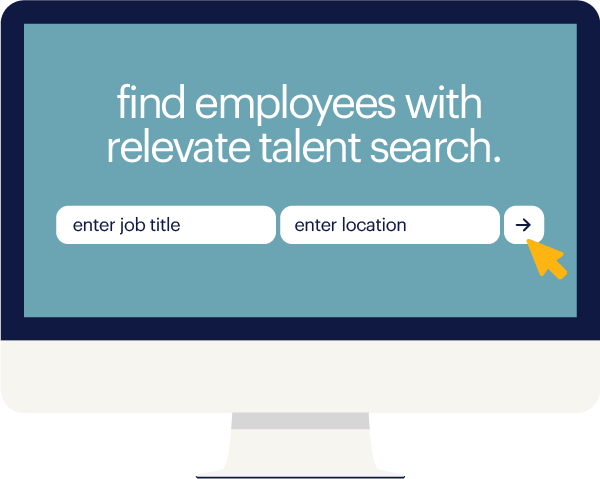It's estimated that four out of five people globally have been directly impacted by lockdowns, stay-at-home measures and other restrictions as a consequence of COVID-19. Now, with businesses gearing up to reopen, the top priority for many enterprises has naturally been readying their workplaces to support the successful — meaning safe — return to collocated work environments for employees.
Yet the sheer scope of organizational challenges surfaced by the pandemic clearly points to long-range changes for many, the consequences of which will play out at least as emphatically in business strategy as in the realm of safety. To be sure, the perils of strategic planning geared to the needs of today, rather than those of tomorrow, have been laid bare by the crisis for companies across the board.
With that in mind, how can organizational leaders better prepare — and empower their people — for the next phase of COVID-19? Read on for three actionable insights.
new communication and engagement imperatives
The state of employee engagement going into the pandemic was at an all-time high, according to the latest poll from Gallup. That's encouraging news for HR leaders. But they'll need to keep it up, while also answering some tough questions, during the recovery phase.
Foremost among those questions for HR leaders:
- How can we engage with and retain leaders and top talent in our increasingly decentralized work environment?
- What can we do to promote a positive workplace culture, even in the face of potentially significant financial setbacks?
- How will the impact of COVID-19 on business performance be translated in terms of salaries, bonuses, scheduled promotions and more?
- In what ways have workforce policies changed due to COVID-19, and what was the decision-making process underpinning those changes?
Many of these may seem to be at core communication challenges, but don't let that minimize their potential impact. How companies answer these questions will send critical signals to their workforces about short- and long-term priorities and goals. For example, we're already seeing changes to compensation plans at many companies in response to COVID-19 — and those changes will need to be communicated strategically. Most notably:
- A full 64 percent of companies said they expected to redesign their compensation plans this year or within the next three years.
- Another 69 percent ranked “the changing nature of compensation” as “important or very important” to their success over the next 12–18 months.
- But just 9 percent indicated that they're ready to address changing employee expectations around compensation.
Effective communication becomes all the more important given that, according to the same survey, the majority of employers allow "little or no" input from employees to factor into compensation planning. In that context, how well they can address concerns like these will have far-reaching ramifications for retention, employer branding, morale and more down the line.
changing HR challenges — from within and without
But what's the view from the other side — for employees entering the uncharted terrain of the recovery phase?
Make no mistake, they're facing unique challenges, and HR leaders will need to be uniquely equipped to respond to them.
For starters, expect mental health to become a mainstream workplace conversation as never before. Nearly 70 percent of employees in a recent survey categorized the COVID-19 pandemic as "the most stressful time" in their entire careers. Meanwhile, prescriptions for anti-anxiety medications have soared by 34 percent in the U.S.
 70% of employees categorized
70% of employees categorized
COVID-19 as "the most stressful time."
These alarming stats aside, no matter what redeployment strategies companies pursue, a complicated (and probably not uncontested) period of adjustments will probably follow. For example, employees who have grown accustomed to working from home may well expect, or even outright demand, greater flexibility, provided they continue to deliver on critical business needs.
For HR leaders tasked with leading the charge, there are also a welter of largely unforeseeable factors, from business regulation to government policy, to consider. The announcement that the IRS will allow employees to make adjustments to their health plans and flex accounts in the middle of the year exemplifies this new layer of complexity.
At the confluence of these two tides — stress, anxiety and uncertainty among employees on the one hand, and constantly changing rules and regulations on the other — HR leaders have a chance to emerge as heroes and champions. Or, just the opposite. But either way, be warned: There's going to be a lot of late-breaking news for HR leaders to stay ahead of.
human capital trends and redeployment
Beginning in March, in the days and weeks when COVID-19 emerged as the dominant fact of life for most of us, nearly every business was forced to scramble and adjust. Rapid shifts to virtual and remote work models, the implementation of agile and geographically distributed teams — all of these were evidenced in the early response efforts. And it's worth adding that, though many of these were improvisational in nature, many yielded impressive business outcomes.
Now, heading into the recovery period, companies must confront the next phase of this still-unfolding experiment. In practical terms, some companies — a minority, smaller organizations for the most part — will redeploy their workforces wholesale. But many others will be keen to pursue blended models, with a portion of the workforce resuming work onsite while a significant number of employees continue to carry out their roles remotely.
 55% say their workforce is more productive when remote.
55% say their workforce is more productive when remote.
That makes sense, given that 55 percent of companies said their workforces have been as or more productive than usual while working remotely. Plus, as we move forward, new hybrid models — with an eye toward flexibility — are bound to emerge, as well.
Whatever their differences, all of these responses have been shaped by a shared crisis. In them, therefore, we can see some of the important trends in human capital shaping the recovery phase, including:
- a broad-based strategic shift away from rigidity, linear hierarchy and structure in the workforce
- increasingly blurry distinctions between remote and onsite workers
- a significant push for lower cost, more robust and widely available learning, training and development offerings
Companies that effectively pivot to deliver on all three will emerge from the crisis well positioned — and with stronger and more resilient workforces than they had going into it.
key takeaways
Businesses are revving up to reopen, and workforces around the globe are preparing to get back to work. It's an exciting moment. But, as we have discussed, all of this brings to light salient new challenges around human capital for organizational leaders, including:
- communication and engagement challenges
- HR challenges compounded by ongoing changes to the external environment
- strategic business challenges related to redeployment
It took COVID-19 less than three months, or less than one fiscal quarter, to shake the U.S. economy to the core, dramatically changing the terms of ordinary working life for most Americans. Recovery won't have that same unity of effect. It will be neither a static nor a uniform process — and with no predefined end date in sight, it may very well take longer than we expect. Regardless, this is a moment for HR leaders to embrace change, emerge as strategic leaders and shape the way businesses and their workforces emerge from this crisis.
For more insights on how to best invest in your workforce, watch our latest webinar, "investing in the new workplace post-COVID-19."









